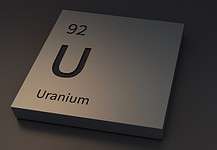PALADIN Energy has completed the first of a two-part prefeasibility study (PFS1) to assess the restart of its Namibian uranium mine, Langer Heinrich.
The company said that it can return to production after a rapid 12-month ramp-up and would require about US$80m to return to production levels of about 5.2mlb pa.
The capital would be divided into US$38m needed for plant repair and US$42 needed for working capital.
Production could increase to about 6.5mlb pa through expansion of the mine during the ramp-up period, which the company said would target the processing of high and medium-grade ore over a six-year period at an additional cost of $US30m.
PFS1 put the mine potentially back in production within 12 months of securing finance, assuming the full completion of appropriate studies during the care and maintenance period.
The study confirmed the average life-of-mine ASIC target to be about US$30/lb, with the potential for further ASIC improvements of about US$4.50 through significant process changes on the restart.
The company hopes to increase process plant surge capacity to enable the leach facility to operate at full rate, increase the water storage capacity on site to avoid production interruptions from pipeline disruptions.
And it would increase the level of automation to enable remote, semi-automatic monitoring and operation.
Paladin chief executive, Scott Sullivan, said that the study put the company back into the position of a first mover in the uranium market.
“Paladin has assembled a first-class team to conduct these studies and they have systematically reviews in detail the entire Langer Heinrich production history and processes,” he said.
“Achieving production of over 5mlb pa at a cost of under $US30/lb ASIC. and with a 12-month lead time in execution, were key targets of the board and executive team and will see Langer Heinrich in an enviable position when uranium priced recover.”
The company also confirmed a maiden vanadium resource at the mine of 122mt at 145ppm of vanadium, which Mr Sullivan said was something the company would look at in the future.
“We are excited about the prospect of vanadium production in the future,” he said.
“We will continue to explore these opportunities, once the market shows signs of improvement.”
Langer Heinrich was placed on care and maintenance in August 2018 after sustained low uranium prices.
In March, Paladin commenced a two-stream prefeasibility study, with the recently completed PFS1 focusing on the rapid restart of the mine over 12 months after an improved uranium market.
During the next phase of the two part study (PFS2) the company will focus on the completion of test work, and updating the pipeline of improvements for further development after the restart.
It is expected to take nine months for completion and be finished in June 2020.








































